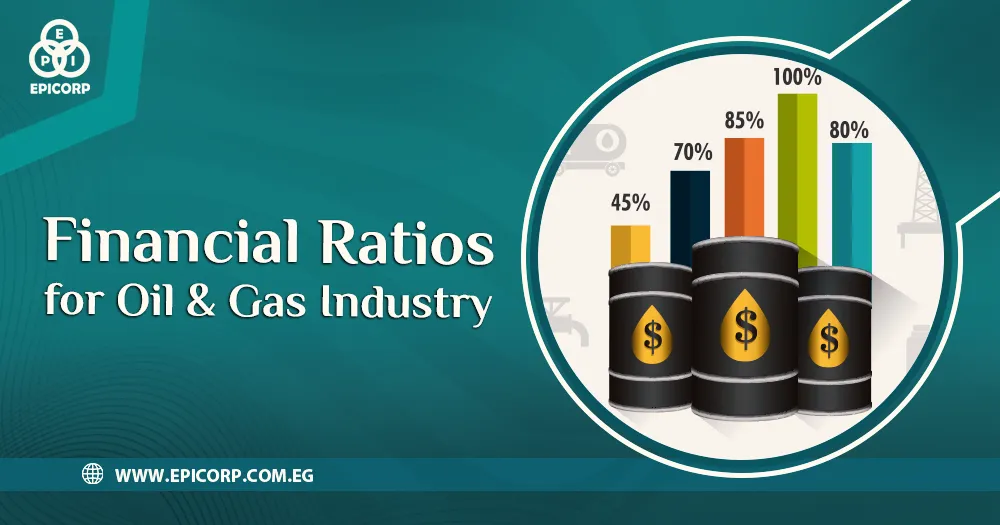financial ratios for oil and gas industry, where key metrics serve as vital indicators of operational health, financial stability, and investment potential. As one of the most complex and globally influential sectors, the financial ratios for oil and gas industry relies heavily on a nuanced understanding of financial ratios to assess performance, manage risk.
And make informed strategic decisions. Join us as we explore the financial ratios for oil and gas industry, shedding light on their significance, interpretation, and implications for stakeholders navigating the ever-evolving landscape of energy markets.
Table of Contents
ToggleWhat is the financial performance of the oil and gas industry?
The financial ratios for oil and gas industry can vary widely depending on factors such as oil prices, production levels, exploration success, geopolitical events, regulatory changes, and global economic conditions. Historically, the industry has experienced periods of volatility due to fluctuations in oil prices, which can significantly impact revenue, profitability, and investment activity.
During periods of high oil prices, oil and gas companies tend to experience increased revenues and profits, as well as greater investment in exploration and production activities. Conversely, during periods of low oil prices, companies may face challenges such as reduced cash flow, lower profitability, and cost-cutting measures.
Additionally, the financial ratios for oil and gas industry is subject to long-term trends such as the transition to renewable energy sources, increased focus on environmental sustainability, and technological advancements in extraction and production methods. These factors can also influence the financial performance and outlook of oil and gas companies over time.
Read also: Petroleum Industry Definition.
An overview of the oil and gas industry’s finances
The financial ratios for oil and gas industry paints a dynamic picture influenced by various factors. Revenue generation within the sector stems from exploration, production, refining, and distribution of petroleum products, heavily impacted by global oil prices driven by supply-demand dynamics, geopolitical events, and economic conditions.
Capital expenditure fluctuates with oil price expectations, technological advancements, and regulatory requirements, reflecting companies’ investment in exploration and infrastructure maintenance.
Key financial metrics such as EBITDA, net income, and cash flow from operations provide insights into profitability, liquidity, and leverage, crucial for assessing financial health. However, the industry faces challenges including technological innovation, energy transition.
Regulatory changes, environmental concerns, and geopolitical risks, necessitating adaptation and diversification strategies. Investor sentiment and market outlooks remain sensitive to oil price volatility, geopolitical tensions, and long-term energy trends.
Get to know: What Is Petroleum Energy
The financial ratios for oil and gas industry financial health
financial ratios for oil and gas industry are indispensable tools for assessing the financial health and performance of companies in the oil and gas industry. These ratios aid in the decision-making process for stakeholders, analysts, and investors by offering insightful information on a variety of operational aspects of a business.
Liquidity ratios, such as the current ratio and quick ratio, offer insights into a company’s ability to meet short-term financial obligations, vital in an industry where upfront investment and price volatility are common.
Profitability ratios, including return on equity and return on assets, gauge how effectively a company generates profits relative to its resources and investments. These ratios are particularly important given the capital-intensive nature of oil and gas operations.
Debt ratios, such as the debt-to-equity ratio and interest coverage ratio, assess a company’s leverage and its ability to manage debt amidst fluctuating oil prices and economic conditions.
Here’s: Solid Waste Management In Petroleum Refineries.
Essential statements for financial analysis in the oil and gas sector
In the financial ratios for oil and gas industry, essential financial statements provide critical insights into a company’s performance, financial health, and operational efficiency. These statements include the income statement, balance sheet, cash flow statement, reserves statement, and production volume report.
The income statement offers a comprehensive view of a company’s revenues, expenses, and profitability, aiding in assessing revenue sources, cost structures, and profitability margins. The balance sheet provides a snapshot of a company’s financial position, revealing its assets, liabilities, and shareholders’ equity, assisting in evaluating liquidity, leverage, and solvency.
The cash flow statement tracks the inflows and outflows of cash, helping assess a company’s ability to generate cash, fund operations, and invest in growth opportunities. The reserves statement offers insights into a company’s proven, probable, and possible reserves of oil and gas, aiding in evaluating asset base and long-term value.
Read also: Petroleum Refinery In Modern Times.
Performance analysis of oil and gas companies: important financial ratios and metrics
Performance analysis of financial ratios for oil and gas industry involves evaluating a range of financial ratios and metrics to assess their operational efficiency, profitability, and financial health. Key financial ratios for oil and gas industry and metrics used in this analysis include:
1. Liquidity Ratios:
Liquidity ratios such as the current ratio and quick ratio measure a company’s ability to meet its short-term financial obligations with liquid assets.
These ratios are crucial in assessing a company’s ability to manage cash flow and withstand short-term financial challenges, especially in an industry characterized by capital-intensive operations and price volatility.
2. Profitability Ratios:
Profitability ratios such as return on equity (ROE) and return on assets (ROA) assess a company’s ability to generate profits relative to its equity and assets.
These ratios provide insights into how effectively a company utilizes its resources to generate returns for shareholders and investors, crucial metrics for evaluating operational efficiency and financial performance.
3. Debt Ratios:
Debt ratios such as the debt-to-equity ratio and interest coverage ratio evaluate a company’s leverage and its ability to manage debt obligations.
Given the capital-intensive nature of the oil and gas industry, where companies often rely on debt financing for exploration and production activities, these ratios are essential in assessing a company’s financial risk and solvency.
Read also: Oil Refinery Waste Products.
4. Efficiency Ratios:
Efficiency ratios such as asset turnover and inventory turnover measure how efficiently a company utilizes its assets and resources to generate revenue.
These ratios provide insights into operational efficiency and effectiveness in managing assets, inventory, and production processes, key considerations in a sector where maximizing operational efficiency is critical for profitability.
5. Reserve Metrics:
Reserve metrics such as reserves replacement ratio and reserve life index assess a company’s ability to replace depleted reserves and sustain production levels over time.
These metrics provide insights into a company’s long-term growth potential, asset base, and future production prospects, crucial factors for investors and stakeholders evaluating investment opportunities in the oil and gas sector.
Conclusion
In conclusion, financial ratios for oil and gas industry serve as invaluable tools for evaluating the performance and health of companies within the oil and gas industry. These ratios provide insights into various aspects of operations, including profitability, liquidity, leverage, efficiency, and market valuation. According to EPICORP, by analyzing these metrics, investors, analysts, and industry stakeholders can make informed decisions regarding investment, risk management, and strategic planning. However, it’s essential to recognize the unique dynamics and challenges of the oil and gas sector, such as commodity price volatility, geopolitical factors.
FAQ
What is the current ratio of the oil industry?
The current ratio can vary among companies and is influenced by factors such as liquidity, debt levels, and market conditions. You may need to refer to recent financial reports or industry analyses for the most up-to-date information.
What is a good oil ratio?



